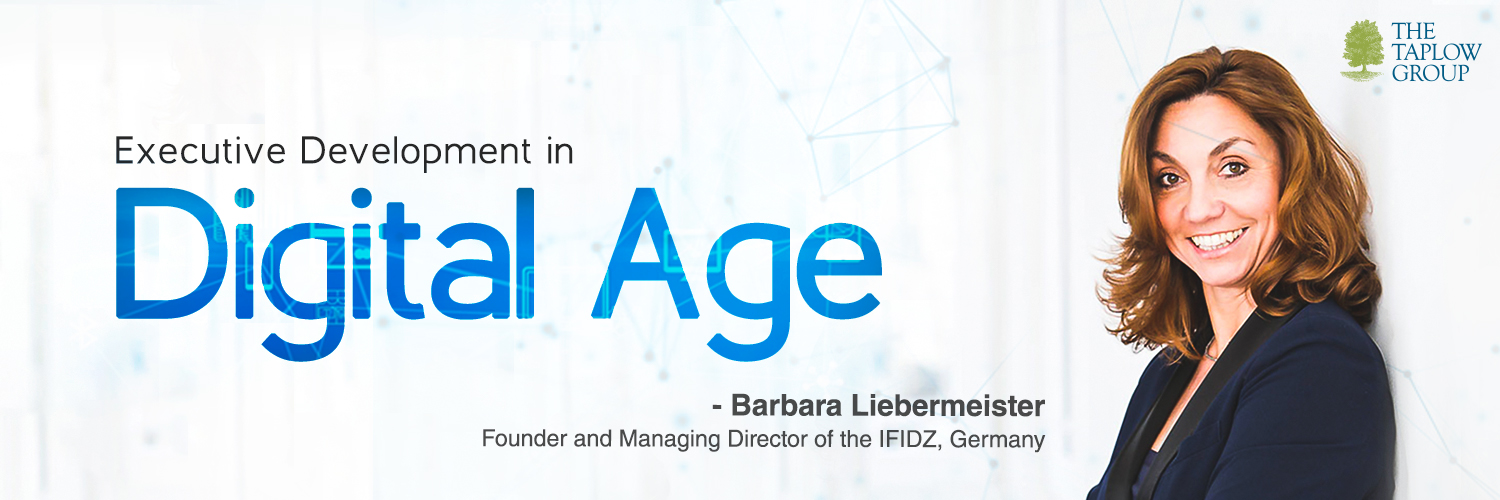This attitude and the necessary competences are generally not covered in traditional executive development programmes. And not only the content requires a new approach – the traditional format of seminars or workshops, followed by learning on the job, also needs an overhaul: modern information and communication technologies also provide an opportunity to create new, innovative learning structures.
Conceptualising such new development programmes can be difficult for personnel development managers. Often, they lack digital competence themselves. They don’t know which learning structures are technically possible and make sense to be included, and they struggle to anticipate the future needs of the company and its employees. As a consequence, they need to rely on the support of external consultants or their IT department which makes it difficult for them to contribute their expertise to the company’s digital transformation.
Multi-step approach
When developing new executive development programmes that fulfil the requirements of today’s environment, a multi-step process is recommended.
As a first step, the development manager and his internal customers – across functions and hierarchies should get together to define their joint understanding of the basic leadership principles in the digital age and the respective change required with regard to the desired corporate and leadership culture. This provides a basis for determining the needs for change, and aligning on the core objectives of the new executive development.
The result may be that a programme should cover the key competences required for leading in the digital age. Or the programme needs to address behavioural aspects for participants to be able to assume the different leadership roles (leader, enabler and empowerer). Or the programme should focus on covering essential leadership instruments and tools needed in the future.
Whatever the objective – alignment of the existing leaders within the company is key. A common leadership culture can only emerge, when there is a general and crossfunctional understanding on all levels of the core components of leadership, such as values or the image of the human being – regardless of an executive’s respective personality, function and leadership style.
As a next step, the development needs in a company at various divisional levels need to be analysed. There are different ways of doing this. One common approach consists of structured interviews with executives on the medium and top level. However, it is recommended to also include executives on the operative level and at least selected members of staff. For one thing, this means that leaders also receive feedback from the levels below on their leadership style and behaviour, giving them a sense for their own need for change. Secondly, it can serve as a signal to employees that they have an opportunity to contribute to shaping the leadership culture.
Elements of executive development
Now the future executive development programme can be put together. In the digital age, it is essential that online and face-to-face training are combined, applying modern information and communication technology in an effective and meaningful manner. At the same time, the structure needs to be flexible. Framework conditions and the current state of technology are evolving constantly, so in order to ensure the expediency of the programme, the structure needs to be reviewed and possibly adjusted as time progresses.
In general, modern executive development programmes combine the following elements:
- Collective qualification (seminars, workshops, webinars, learning platforms). Here, participants are taught the skills they need for leading people in the digital age. The joint learning experience ensures the necessary alignment.
- Individual qualification (coaching, mentoring). Participants learn the behavioural flexibility they need to fulfil their leadership function and strengthen their self-confidence as a leader.
- Transfer supporting measures (team coaching, knowledge sharing). These ensure that participants actually display the desired leadership behaviour and that a leadership culture is developing that meets the needs of the digital age.
- Learning on the job. This systematically expands the new leadership competences and turn them into routine.
The share of the different elements within the overall programme will vary, of course. For junior managers who still need to learn the basics of leadership, collective qualification will prevail. The more experienced participants are, the more the training measures need to be tailored to their individual needs.
Ensuring buy-in across all functions and hierarchies
Once the new programme has been finalised, it should be presented and explained to all executives in a joint meeting. This will ensure a common understanding across all functions, making sure that everyone is aware that change is necessary and what it will look like.
Often, such a presentation is not enough to create the necessary enthusiasm and dynamics. Therefore, it makes perfect sense to conduct a self-reflection exercise using a competence analysis tool – either just before or after the meeting. This will provide all executives with an individual analysis of their digital-oriented level of leadership maturity, giving them input for their individual development. On that basis, they can then agree individual development objectives that are in line with their needs as leaders as well as the needs of the company.
However one thing must not be forgotten, which is just like the executive development programme itself, these agreements also need to be flexible. In a Vuca world, everything is of a preliminary nature, based on the current common level of knowledge. Therefore, it’s key for leaders to remain in constant contact with their staff in order to modify and adjust these agreements as and when needed.
AUTHOR
Barbara Liebermeister
Barbara Liebermeister heads the Institute for Leadership Culture in the Digital Age (IFIDZ) in Frankfurt. The conference speaker and management consultant is also author of the book "Digital doesn't matter: people remain people - leadership is the key".
